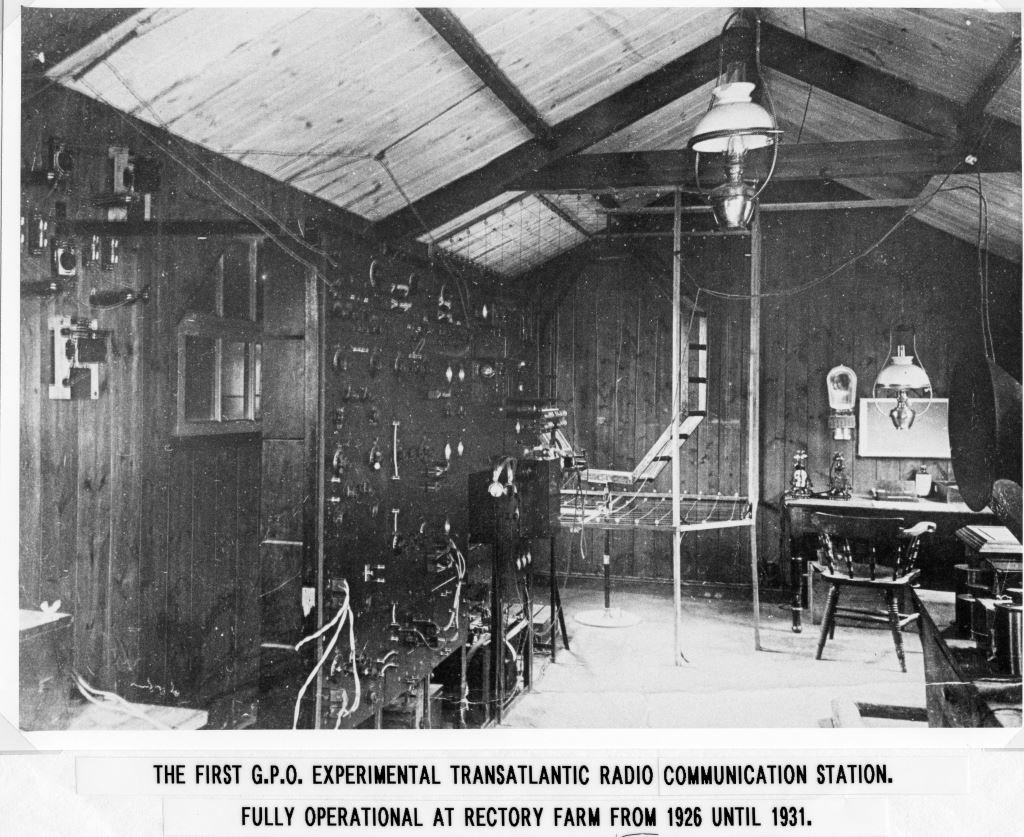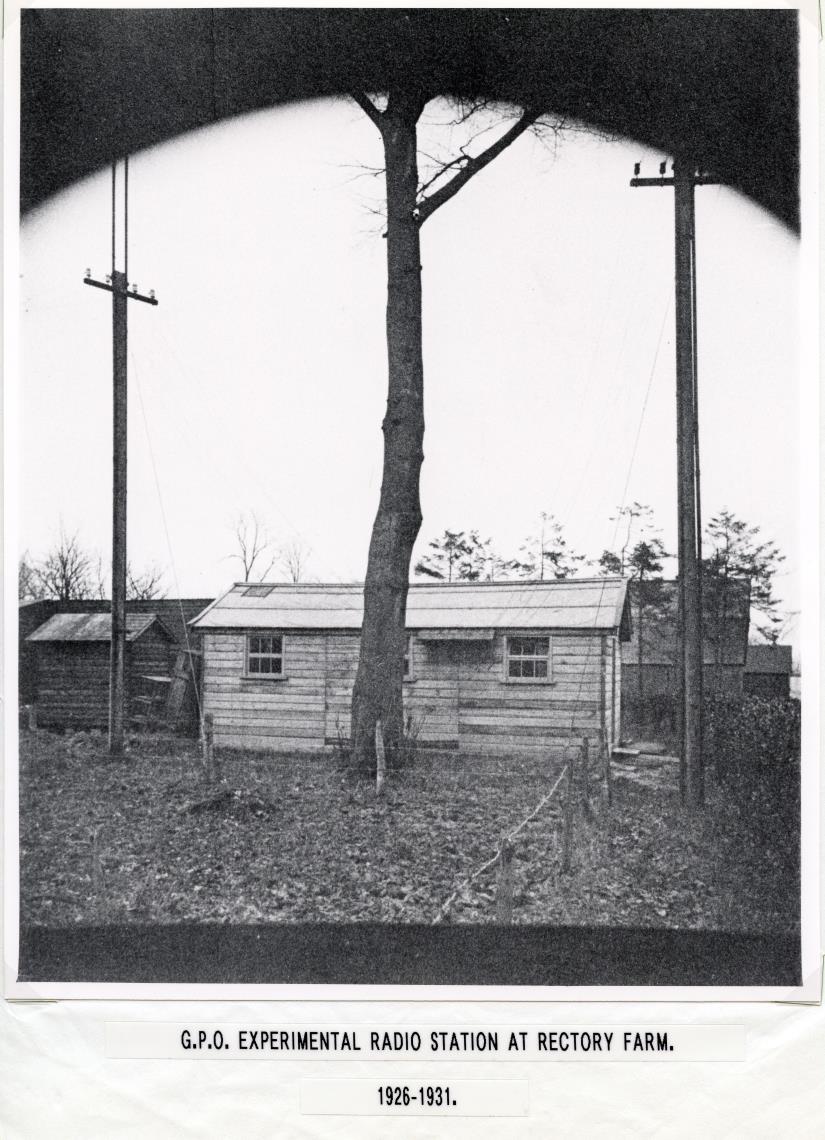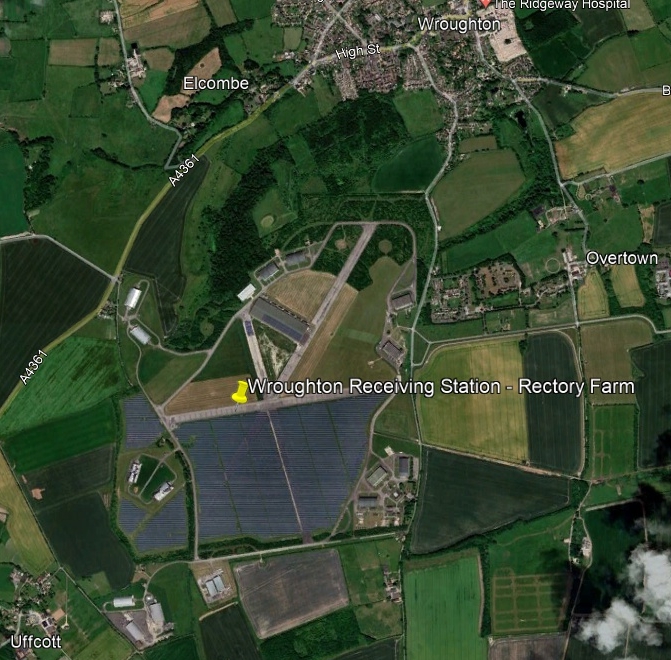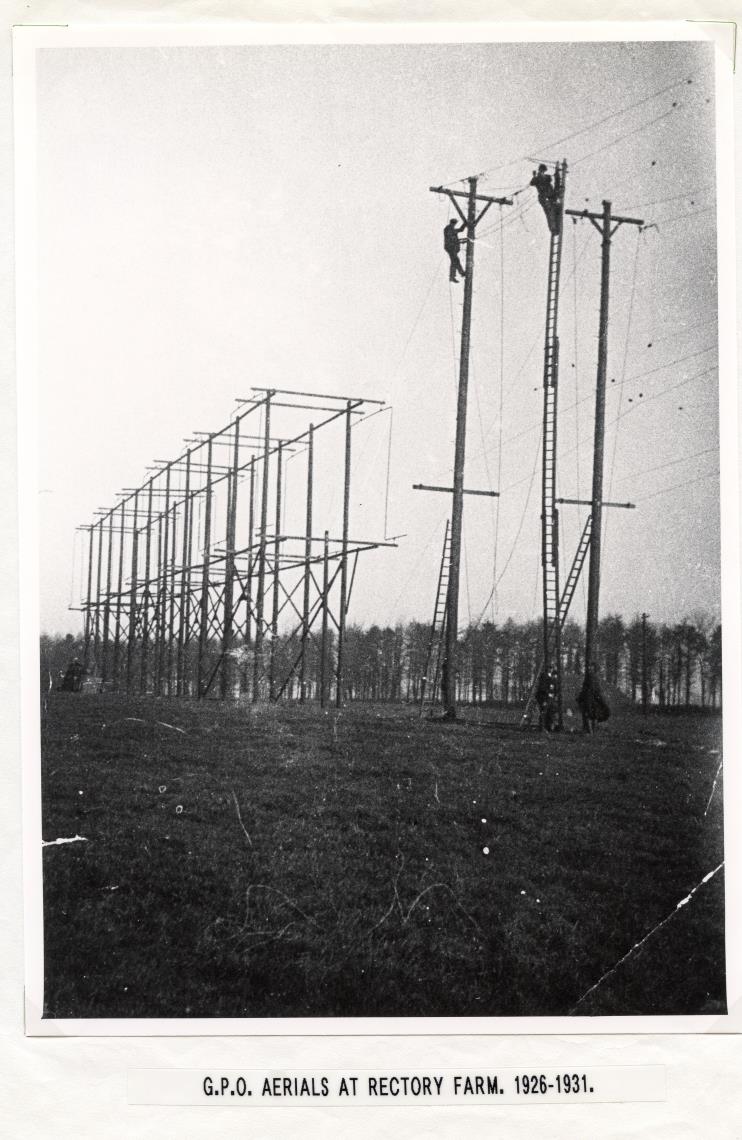Wroughton Wireless Receiving Station

Several months of research by Dave Sabin have finally revealed the location of the G.P.O. wireless receiving station at Wroughton. With the help of Wroughton History Group several photographs of the site have been located along with information of where they were taken. The site played an important part in the development of transatlantic wireless communication as the receiver for the first wireless telephone service between Britain and the USA.
Note: all photographs of the wireless site are Copyright of Wroughton History Group and have been reproduced with their kind permission.
The site is referred to within the history of Rugby Radio Station:
"In the history of communications, Friday 7th January 1927 stands as a hugely significant milestone. It was on this day that Rugby Radio Station’s second long wave transmitter (60 kHz / call-sign ‘GBT’) opened the world’s first telephone service across the Atlantic.
These first telephone calls came to Rugby Radio Station from London by landline. Once here, they were transmitted to the Houlton Receiving Station in Maine, USA. From there they were carried once again by landline, all the way to New York.
The return signal came via the Rocky Point Transmitting Station and was received at Wroughton Receiving Station, which was little more than a wooden hut on the outskirts of Swindon."

The photographs of the site from the Wroughton History Group archive clearly state the location at Rectory Farm, similar images can be seen in the BT Archive and these also date to 1926 but the exact location of the site was unknown. Perhaps part of the reason for the difficulty in finding its location is that Rectory Farm was sold and demolished in 1937 ahead of the construction of RAF Wroughton, using old maps it can be seen that the farm was located almost at the convergence of the runways in the centre of the site. Geophysical survey relating to the construction of a solar farm was carried out by Archaeological Services WYAS (report available from ADS) but only magnetic debris associated with the farm's demolition was located.
 Google Earth image showing the location of the wireless station
Google Earth image showing the location of the wireless station
According to Rugby Radio archives, the Wroughton receiver utilised a Beverage type aerial of 5 miles length. The Beverage is also known as a Wave Aerial (or antenna) and usually requires alignment to the great circle path towards the transmitter site, the far end of the aerial is terminated in a resistor that ensures a unidirectional response. The aerial does not require a great height so it would probably have looked like a telegraph wire mounted on wooden poles; however, it would have traversed numerous fields from the chalk plateau into the clay vale, terminating to the south of Wootton Bassett.
The image below shows the construction of aerials but probably not of the Beverage type, perhaps a number of experimental aerials were tested or that there was an assumption that the long Beverage aerial was used as this was known to have been used at an identical experimental station at Chedzoy in Somerset, although here it was 7 miles long.
The station at Chedzoy was constructed with great secrecy in 1923 and became the first wireless telephonic station in the country, the experimentation paved the way for the service established at Wroughton in 1927. Larry Bennett has an excellent write up of the Chedzoy site in his book The Marconi Beam Wireless Stations of Somerset, (see references below) with reference to Wroughton he indicates that a double receiving aerial had been erected which may account for what we can see being worked on in the photo below. He also indicates that one of the reasons for the use of Wroughton was its close proximity to the underground telephone cable system between London and the West of England.

By the end of 1927 the use of Wroughton within the wireless telephone service had ended as the receiving station moved to Cupar in Scotland for technical reasons regarding the strength and reliability of the signal received. However, the site played an important part in the development of wireless technology and should be recognised as the receiving station for the world's first transatlantic wireless telephone service.
Wiltshire has several other nationally and internationally important wireless sites the are largely unknow, read more about Devizes Wireless Station.
Acknowledgments and References
Many thanks to Diane Archer and members of Wroughton History Group for locating photographs of Wroughton Receiving Station, without these we would be no wiser as to where the site was located! Many thanks also for giving permission to use the photographs, Wroughton History Group hold Copyright to the images, they are reproduced here purely for the purposes of dissemination of information about the wireless station and are not linked to any commercial project or other form of commercial gain. Regarding any copying or reuse of the images on this webpage, communication should be directly with Wroughton History Group.
Larry Bennett is acknowledged as a source of information for the Chedzoy Experimental Radiotelephone Station through his book: The Marconi Beam Wireless Stations of Somerset (New Generation Publishing 2023, ISBN 978-1-80369-785-7).